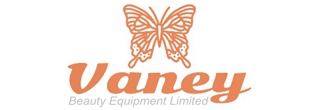Best LED masks and Light Therapy Masks To Use At Home
Do LED Light Masks Really Work?
They look robotic — like a Stormtrooper’s headgear from Star Wars, if you will — and promise to give you clearer, smoother-looking skin. Called LED light masks, they are what they sound like: devices illuminated by LED lights that you wear over your face.
Here’s what you need to know before you invest in the celebrity-beloved beauty trend, including how and if the masks work, what you’ll pay, and the best products according to board-certified dermatologists.
Are LED Masks Safe to Use?
LED masks have an “excellent” safety profile, according to a review published in February 2018 in the Journal of Clinical and Aesthetic Dermatology.
And though you may have heard more people talking about them lately, they’re nothing new. These devices have been around for decades and are generally used by dermatologists or aestheticians in an office setting to treat inflammation after facials, minimize breakouts, and give skin an overall boost. Today you can purchase these devices and use them at home.
The convenience of improving your skin while sipping vino or lying in bed may be a huge selling point — it makes skin care look easy. If people believe the masks work as effectively as an in-office treatment, they save time commuting to the doctor, waiting to see a dermatologist, and money for office visits.
What Does an LED Mask Do to Your Skin?
Each mask employs a different spectrum of light wavelengths that penetrate the skin to trigger changes at the molecular level.
Each spectrum of light produces a different color to target various skin concerns.
For instance, red light is designed to increase circulation and stimulate collagen, making it useful for those who are looking to reduce the appearance of lines and wrinkles, she explains. A loss of collagen, which tends to happen in aging and sun-damaged skin, can contribute to fine lines and wrinkles.
On the other hand, blue light targets bacteria that cause acne, which can help stop the cycle of breakouts. Those are the two most common and popular colors used, but other masks on the market use additional light, such as yellow (to reduce redness) and green (to lessen pigmentation).
At-home skin-care routines have really leveled up over the past few years, especially in the tool arena, and no skin-care gadget is as intriguing as the LED light-therapy mask.
Celebrities are no longer the only ones who get to wear luminescent masks and haunt the public’s dreams by Instagramming their LED selfies. There are now several regular-person versions available online, meaning anyone can harness the power of LED light — usually of the blue (bacteria-killing) and red (collagen- and elastin-stimulating) varieties — without a fancy dermatologist’s supervision.
Though they make you look slightly upsetting on the outside, these eight LED light-therapy masks will get you glowing underneath by reducing inflammation, acne, wrinkles, and discoloration at depths your topical products can’t on their own.
What are the benefits of LED masks?
LED masks for the skin help treat a variety of different skin concerns, such as firming the skin, combating wrinkles, reducing inflammation, preventing breakouts, and regulating oil production.
Green light is typically used for hyperpigmentation by targeting melanocytes, quelling toxic free radicals, and breaking up melanin clusters. It inhibits the production of excess melanin and prevents it from traveling to the skin surface. On the other hand, red light triggers cells called fibroblasts to produce collagen and elastin, making it ideal for anti-aging. This can help reduce the appearance of wrinkles and thin skin.
And lastly, blue light is typically used to treat acne. Blue light stimulates the production of oxygen radicals that kill the acne-causing bacteria C. acnes. It has also been shown to reduce activity in the sebaceous glands, so they produce less of the oil that can plug pores and trigger acne.
Can you use different LED lights at the same time?
Absolutely! Because red light has also been shown to reduce the production of cytokines, which cause inflammation, it is commonly used in combination with blue light to manage inflammatory conditions like acne and rosacea.
Are there any side effects to LED masks?
After years of being taught that UV light is dangerous, it might seem counterintuitive to intentionally treat your face with light. But don’t worry—LED light is completely safe and won’t cause any damage. LEDs are usually very safe for all skin colors and types as the procedure is non-invasive and does not require the application of any topicals with the potential for irritation.
But there are some concerns of eye damage, especially if you have a history of seizures or migraines triggered by bright lights, so always shield the eyes or wear eye protection when using a LED device. People who take photosensitizing medications like lithium, certain antipsychotics, or some antibiotics should avoid LED light altogether.
How long will it take to see results?
If you’re looking to see an instant improvement, at-home LED light therapy probably isn’t for you. Remember what I said about these gadgets not being nearly as powerful as an in-office treatment? You’ll likely have to wait a minimum of four to six weeks, or longer, to notice any visible skin improvements. Make sure you are the type of person who will be consistent with using it because it won’t do any good otherwise.
Also, it’s helpful to keep your expectations in check. If you have more established wrinkles or severe (read: cystic) acne, talk to your dermatologist about other possible treatments (like Botox or Accutane), as your skin may not be very responsive to at-home light therapy.
The Best LED Light Masks
If you’re curious to try LED masks at home, shop Best LED masks.

